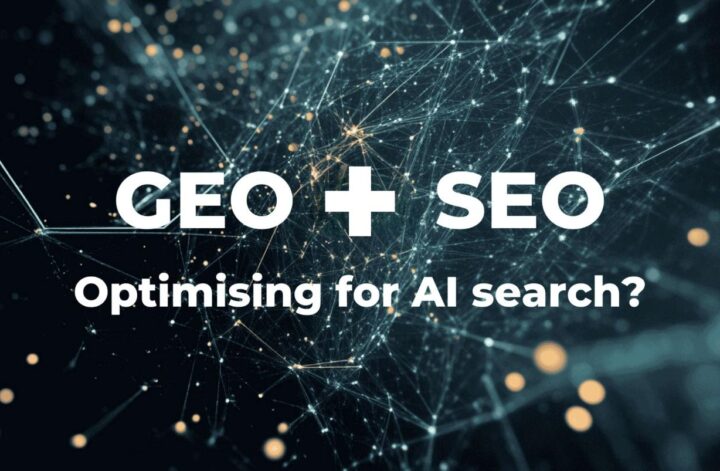Traditional search patterns experience significant changes in modern times. While traditional search engines like Google remain vital, the emergence of generative AI tools—such as ChatGPT and Google Gemini—has reshaped how users access information. This evolution requires a dual strategy: capitalizing on traditional search engine optimization services while taking advantage of the new era of Generative Engine Optimization (GEO).
This blog compares SEO and GEO, explores how they complement one another, and offers a roadmap to integrate both approaches for maximum impact.
Understanding SEO and GEO
To clearly distinguish between SEO and GEO, the following table presents a comparison of their core elements:
| Aspect | SEO | GEO |
| Primary Focus | Search engines (e.g., Google) | Generative AI (e.g., ChatGPT) |
| Optimization Goal | Higher SERP rankings | Inclusion in AI-generated answers |
| Key Techniques | Keywords, backlinks, site speed | Semantic clarity, structured data |
| User Interaction | Website clicks | Conversational responses |
Why Combine GEO and SEO?
Integrating GEO with SEO yields a holistic approach that addresses both human and AI-driven search behaviors. Key advantages include:
- Expanded Visibility: SEO targets conventional search users, whereas GEO targets individuals who utilize AI chatbots or virtual assistants.
- Content Relevance: GEO’s emphasis on semantic clarity supplements SEO’s emphasis on user intent, resulting in authoritative content.
- Future-Readiness: With generative AI gaining pace, GEO guarantees that companies remain exposed as search patterns change.
- Enhanced Engagement: Both techniques emphasize high-quality, user-centric content, which increases user satisfaction and retention.
- Local and Global Reach: GEO makes it simpler for businesses to reach both local and international audiences by helping them localise their content for certain locations while still taking advantage of the wider exposure that SEO provides.
Read: Keyword Mastery: How to Choose the Right Terms for PPC Success
Local and Global Reach with GEO and SEO
The combined power of GEO and SEO strategy is particularly effective in addressing both local and global audiences, enabling businesses to tailor their strategies to diverse markets.
Local Reach
SEO: Local SEO focusses on geographically focused queries, such as “coffee shops near me.” Claim Google Business Profiles, use location-specific keywords, and build local backlinks.
GEO: Generative AI often responds to location-specific queries (e.g., “Where can I find a mechanic in Seattle?”). GEO ensures content is structured with clear, location-relevant details that AI can easily parse.
Example:
- A bakery in Chicago could optimize its website with keywords like “Chicago artisan bread” (SEO).
- Include a FAQ section answering, “What are the best bakeries in Chicago?” (GEO).
Global Reach
SEO: Global SEO offers broad visibility across search engines, depending on content language, hreflang tags, and geotargeting strategies to attract international audiences. It leverages hreflang tags and global backlinks to enhance cross-border visibility.
GEO: AI engines serve users worldwide, often synthesizing answers from diverse sources. GEO optimizes for universal clarity, using culturally neutral language and structured data to ensure content resonates globally.
Example:
- A tech company could target “best cloud storage solutions” (SEO).
- Structuring content to answer, “What is the most secure cloud storage?” for AI platforms (GEO).
| Scope | SEO Tactics | GEO Tactics |
| Local | Local keywords, Google Business Profile | Location-specific FAQs, clear addresses |
| Global | Multilingual content, hreflang tags | Universal language, structured data |
Strategies for Implementing GEO + SEO
To harness GEO and SEO effectively, consider these steps:
- Unified Keyword and Intent Research
SEO: Use tools like SEMrush to identify high-value keywords.
GEO: Study conversational queries (e.g., “How does… work?”) to align with AI interactions.
Action: Develop content that balances explicit keywords with implicit user needs.
- Optimize Content Structure
Use clear headings and bullet points for SEO readability. Plus, incorporate schema markup for GEO to aid AI parsing.
Example: A travel blog could target “best destinations in Europe” (SEO) and include a Q&A section for “What are top European travel spots?” (GEO).
- Build Authority
SEO: Secure backlinks from reputable sites.
GEO: Cite credible sources and use authoritative phrasing to boost AI trust.
Tip: Include data or expert insights to enhance credibility.
- Monitor Performance
Track SEO metrics via Google Analytics. Test GEO effectiveness by querying AI platforms to check content inclusion. Consequently, update strategies based on algorithm changes and trends.
Challenges to Address
- Resource Management: Balancing GEO and SEO efforts requires prioritization of high-impact tasks.
- Algorithm Shifts: Both AI and search engines evolve, demanding continuous adaptation.
- Content Alignment: Ensure GEO enhancements (e.g., conversational tone) support SEO goals (e.g., keyword focus) without overlap.
Conclusion
The evolution of search—from keyword queries to conversational AI—demands a more nuanced and forward-looking strategy. SEO remains foundational, but the rise of generative engines introduces new dynamics that cannot be ignored. Combining GEO tactics with proven search engine optimization services is a smart, future-ready move. Rather than treating SEO and GEO as separate paths, the real advantage comes from combining their unique strengths. Need help navigating the future of search? Contact us now for expert guidance.




